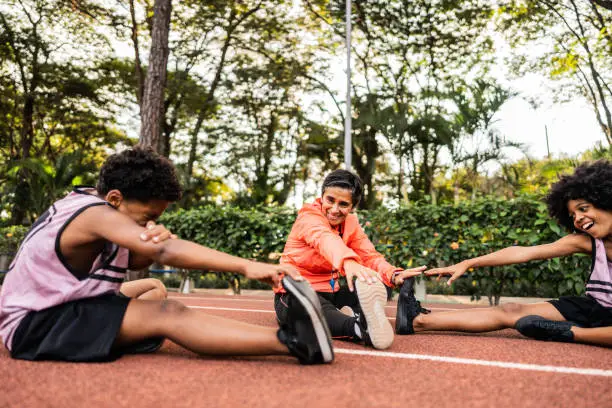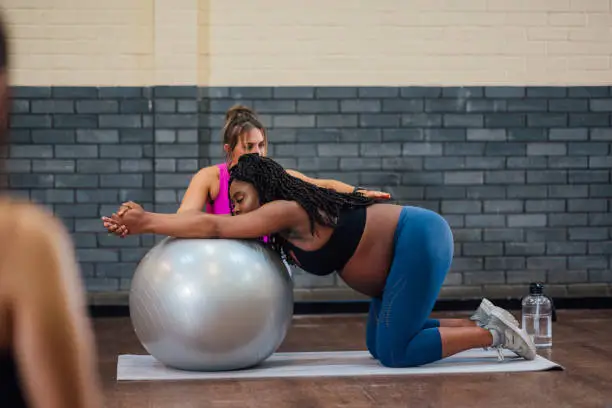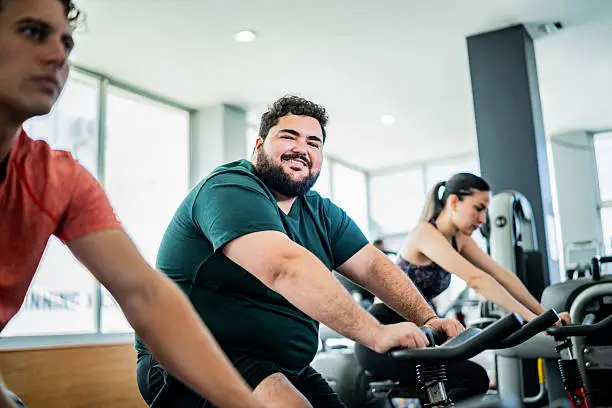Starting an exercise routine as a teenager is one of the best gifts you can give your body and mind. Whether you want to improve your athletic skills, boost your mood, or simply feel healthier, getting active sets you up for a lifetime of benefits. But here’s the catch—jumping into exercise without knowing how to do it safely can lead to injuries or burnout, which might turn you off from fitness altogether. So, how can teenagers begin exercising safely and effectively?
In this detailed guide, we’ll break down everything teens need to know—from understanding why exercise matters to the best safe workout types, how to warm up properly, avoid common mistakes, and stay motivated. Let’s make fitness fun, safe, and rewarding for you! 🎉
🌟 Why Exercise Is Crucial for Teenagers
Physical Benefits
During adolescence, your body is still growing and changing rapidly. Exercise helps:
- Build strong bones and muscles: This supports healthy growth and development.
- Improve cardiovascular health: Keeping your heart and lungs strong sets a foundation for a healthy future.
- Maintain a healthy weight: Regular activity balances calories and supports metabolism.
- Enhance coordination and flexibility: Vital for sports and everyday movements.
Mental and Emotional Benefits
Exercise doesn’t just shape your body; it also sharpens your mind and uplifts your spirit by:
- Reducing stress and anxiety through the release of feel-good hormones like endorphins.
- Improving concentration and academic performance.
- Boosting self-confidence and body image.
- Promoting better sleep quality.
Social Benefits
Joining a sport or fitness group can help you make friends, develop teamwork skills, and learn discipline. It’s a great way to bond and have fun while staying active.
🛡️ Safety First: What Teenagers Need to Know Before Starting
Consult With a Healthcare Provider
Before starting any new exercise program, especially if you have any health conditions or injuries, check with a doctor or pediatrician. They can offer personalized advice and help you avoid activities that might not be suitable.
Listen to Your Body
Your body knows best. If something hurts (sharp pain, not just muscle soreness), stop and rest. Never “push through” pain—that’s how injuries happen.
Start Slow and Progress Gradually
It’s tempting to dive in full force, but building strength and endurance takes time. Start with moderate activity and slowly increase intensity, duration, and frequency.
Use Proper Gear and Clothing
Wear comfortable, breathable clothes and appropriate shoes designed for your chosen activity. Good footwear reduces injury risk, especially for running or jumping sports.
🏃♀️ Best Safe Exercise Options for Teens
Aerobic Activities (Cardio)
These get your heart pumping and lungs working:
- Walking or jogging: Great for beginners and easy to do anywhere.
- Swimming: Low-impact and full-body exercise that’s easy on the joints.
- Cycling: Fun for outdoors and builds leg strength.
- Dancing: Combines cardio and coordination with creativity and fun.
Strength Training
Building muscle safely is super important and doable with proper guidance:
- Bodyweight exercises: Push-ups, squats, lunges, and planks don’t require equipment and are safe when done correctly.
- Light weightlifting: Use light dumbbells or resistance bands under supervision to build strength without risking injury.
- Core strengthening: Exercises like bridges and leg raises improve posture and balance.
Flexibility and Balance
Stretching and balance exercises reduce injury risk and improve overall movement:
- Yoga or Pilates: Great for flexibility, strength, and mindfulness.
- Dynamic stretches: Leg swings, arm circles, and lunges before workouts warm up muscles safely.
🔥 How to Warm Up and Cool Down Properly
Why Warming Up Matters
Warming up increases blood flow to muscles, raises body temperature, and preps your nervous system, which helps prevent injuries.
- Start with 5-10 minutes of light cardio like walking, jogging, or jumping jacks.
- Follow with dynamic stretches such as leg swings, arm circles, and torso twists.
Cooling Down Is Just as Important
After exercise, cooling down helps your heart rate return to normal and reduces muscle soreness.
- Do 5-10 minutes of light walking or slow cycling.
- Finish with static stretches—hold stretches for 20-30 seconds focusing on the muscles you used.
⚠️ Common Mistakes Teens Make and How to Avoid Them
Overtraining
Doing too much too fast leads to fatigue, injuries, and burnout. Remember, rest days are just as important as workout days.
Skipping Warm-Ups and Cool-Downs
Neglecting these increases injury risk and prolongs recovery.
Ignoring Pain or Discomfort
Sharp or persistent pain is a warning sign. Don’t ignore it; rest and seek help if needed.
Poor Technique
Incorrect form can lead to injuries, especially in strength training. Ask a coach, trainer, or experienced adult for guidance.
Comparing Yourself to Others
Everyone progresses differently. Focus on your own journey and celebrate small wins.
🗓️ Creating a Balanced Exercise Routine
Here’s a simple weekly plan for teens starting out:
| Day | Activity Type | Duration |
|---|---|---|
| Monday | Cardio (e.g., jogging or cycling) | 30 minutes |
| Tuesday | Strength training (bodyweight exercises) | 20-30 minutes |
| Wednesday | Rest or light activity (walking, stretching) | 20 minutes |
| Thursday | Cardio (swimming, dancing) | 30 minutes |
| Friday | Strength training + core exercises | 20-30 minutes |
| Saturday | Fun physical activity (team sports, hiking) | 45-60 minutes |
| Sunday | Rest and recovery | — |
💡 Tips to Stay Motivated and Make Fitness Fun
- Set realistic goals: Whether it’s running a mile without stopping or mastering 10 push-ups, goals keep you focused.
- Find a workout buddy: Exercising with friends or family makes it more enjoyable.
- Mix it up: Try different activities so you don’t get bored.
- Track progress: Use a journal or app to celebrate improvements.
- Reward yourself: Treat yourself when you hit milestones (healthy treats, new gear, or a movie night).
- Listen to music or podcasts: They can make workouts more entertaining and distract you from fatigue.
🌱 Nutrition and Hydration Tips for Active Teens
- Eat a balanced diet: Include carbs for energy, protein for muscle repair, and healthy fats.
- Snack smart: Nuts, fruits, and yogurt are great pre- or post-workout snacks.
- Stay hydrated: Drink water before, during, and after exercise—especially important for teens who sweat a lot.
- Limit sugary drinks: They add empty calories and can cause energy crashes.
❓ FAQs About Teen Exercise Safety
Q1: How much exercise should a teenager get daily?
The CDC recommends at least 60 minutes of moderate to vigorous physical activity each day for teens.
Q2: Is it okay to work out every day?
Yes, but include variety and rest days to avoid overtraining.
Q3: Can teenagers lift heavy weights?
Teens can lift weights but should use proper technique, lighter weights, and supervision.
Q4: What if I don’t like traditional exercise?
Find activities you enjoy, like dancing, hiking, or sports—anything that gets you moving counts!
Q5: How do I avoid injuries?
Warm-up, cool down, use proper form, listen to your body, and progress gradually.



